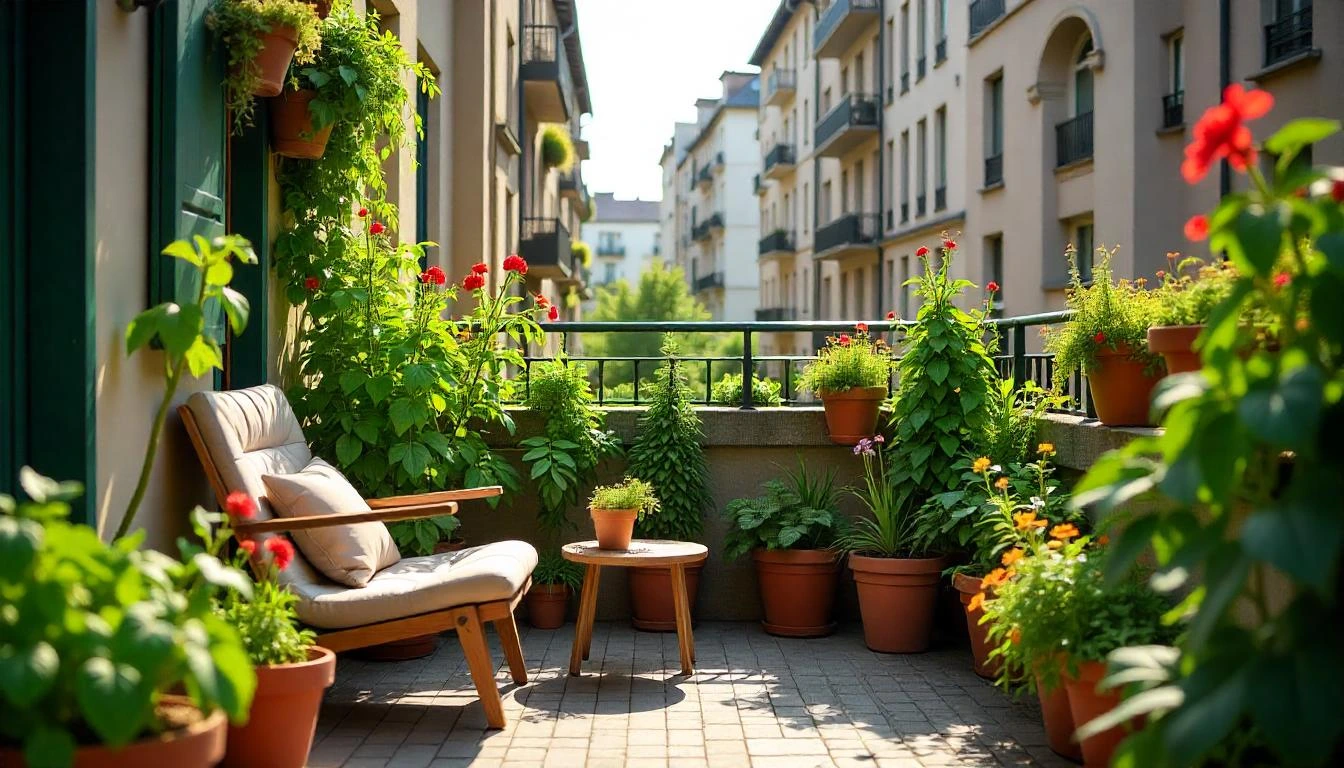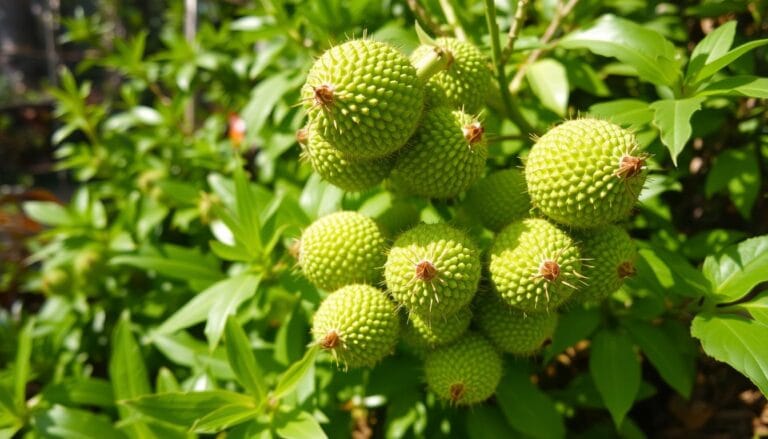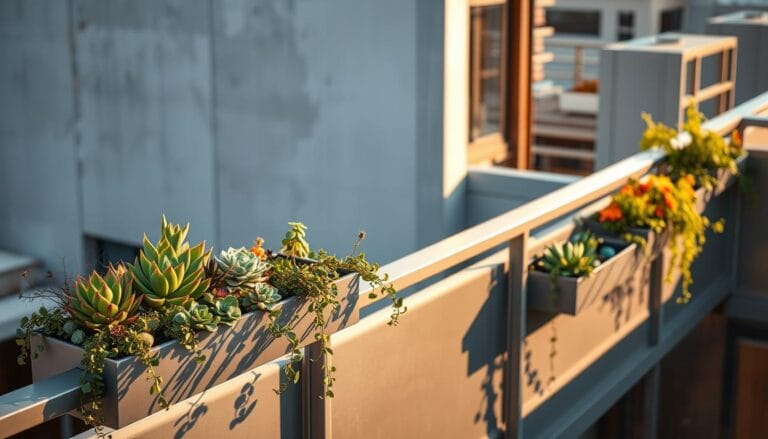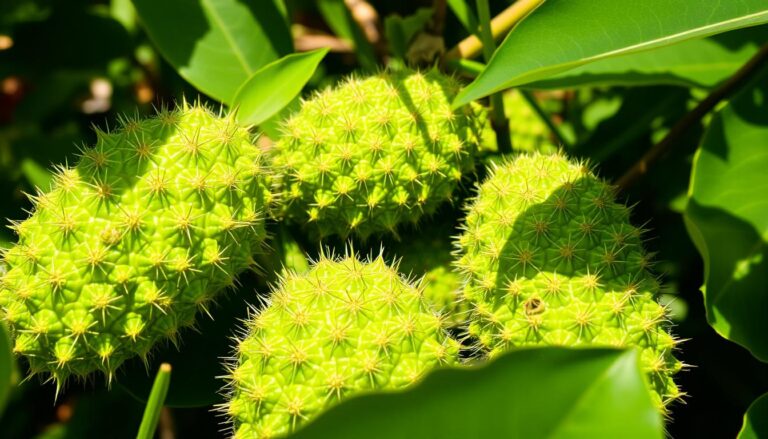Apartment Patio Garden: Your Best Urban Oasis 2025

Imagine stepping outside your apartment and being greeted by the vibrant colors of blooming flowers, the fragrant aroma of fresh herbs, or the promise of ripe tomatoes. While a sprawling backyard garden might be a distant dream for apartment dwellers, the reality is that you can absolutely cultivate a flourishing green space right on your patio. Limited space and the concrete jungle don’t have to mean limited gardening possibilities. The challenges of gardening on an apartment patio – from ensuring adequate drainage and understanding weight restrictions to maximizing limited sunlight – are real, but with a little planning and know-how, you can transform even the smallest balcony into a thriving haven. This guide is your comprehensive resource for unlocking the potential of your apartment patio and creating the garden of your dreams. We’ll cover everything from assessing your space and choosing the perfect plants to tackling pests and adding those finishing decorative touches.
Table of Contents
Planning Your Apartment Patio Garden: The Blueprint for Success
Before you even think about getting your hands dirty, careful planning is key to a successful Apartment Patio Garden.
Assessing Your Space: Know Your Limits (and Opportunities!)
The first step is to truly understand the environment you’re working with.
- Measuring Dimensions: Grab a measuring tape and get precise. Knowing the length and width of your patio will inform everything from the size of your containers to the layout of your plants.
- Weight Limits: This is crucial, especially for balconies. The weight of containers, soil, water, and even you can add up. While precise limits can be hard to find, check with your building management or local building codes if possible. As a general rule, distribute weight evenly and opt for lightweight containers where possible.
- Sunlight Analysis: Observe your patio throughout the day. Does it get full sun (6+ hours), partial sun (3-6 hours), or shade (less than 3 hours)? Understanding sunlight patterns is essential for choosing the right plants. Consider how the sun’s angle changes throughout the seasons. Visual Aid: Imagine a simple diagram here showing a patio with arrows indicating the sun’s path at different times of the day.
- Wind Exposure: Exposed patios can be windy, which can dry out plants and even knock over containers. Consider windbreaks like screens or taller plants strategically placed.
- Water Source: Having a convenient water source is essential. Is there a hose bib nearby, or will you need to rely on a watering can? Plan for drainage to prevent water damage to your patio or the apartment below.
- Layout and Design Considerations: Think about how you’ll use your patio. Will you need space for seating? How will you access your plants for watering and harvesting? Plan the arrangement of your containers for both aesthetics and functionality.
Understanding Your Climate and Hardiness Zones: Nature’s Guide
Your local climate plays a significant role in what you can successfully grow.
- Hardiness Zones Explained: Hardiness zones are geographical areas defined by their average minimum winter temperatures. Knowing your zone helps you choose plants that can survive the winter in your area. Find yours here: almanac.com.
- Climate-Specific Challenges: Consider your region’s specific challenges. Are you dealing with extreme heat and humidity, prolonged drought, or late frosts? Research plants that are resilient to your local conditions.
- Microclimates: Even within your patio, you might have microclimates. A corner sheltered from wind might be warmer, while an area shaded by a wall could be cooler. Identify these areas and choose plants accordingly.
Setting a Budget: Grow Your Garden, Not Your Debt
Gardening doesn’t have to break the bank.
- Initial Costs: Factor in the cost of containers, good quality potting mix, the plants you want to start with, and basic tools like a trowel and watering can.
- Ongoing Costs: Remember that you’ll need to replenish soil over time, potentially buy fertilizer and pest control if needed, and maybe replace plants that don’t make it.
- Budget-Friendly Tips:
- Get creative with containers – think recycled items like old tires (check for suitability), buckets, or even colanders.
- Start plants from seeds rather than buying established plants; it’s much cheaper!
- Look for sales at local nurseries or garden centers.
- Join online gardening communities for plant swaps and free advice.
Defining Your Style and Goals: What Do You Want Your Garden to Be?
Your Apartment Patio Garden should reflect your personal taste and serve a purpose.
- Garden Style Inspiration: Browse gardening magazines, Pinterest, or Instagram for inspiration. Do you love the whimsical charm of a cottage garden, the clean lines of a modern design, or the simplicity of a minimalist approach?
- Functional Goals: What do you hope to harvest or enjoy from your garden? Fresh herbs for cooking? Vibrant flowers to brighten your space? Delicious vegetables for a homegrown meal? Knowing your goals will help you choose the right plants.
- Choosing a Theme: A theme can help create a cohesive look. This could be based on color, plant type (e.g., edibles only), or even a specific regional style.
Choosing the Right Plants for Your Apartment Patio: Green Thumbs Up!
Selecting the right plants is paramount for a thriving Apartment Patio Garden. Consider these factors carefully.
Factors to Consider: Making Smart Choices
- Sunlight Requirements: This is non-negotiable. Plants need the right amount of light to photosynthesize and grow. Don’t try to force a sun-loving plant into a shady spot. Sunlight Level Example Plants Full Sun Petunias, Geraniums, Tomatoes Partial Sun Impatiens, Begonias, Lettuce Shade Coleus, Hostas, Spinach
- Water Needs: Group plants with similar watering requirements together to make watering easier and more efficient.
- Size and Growth Habit: Consider how large a plant will get and whether it spreads or climbs. Choose plants that won’t overwhelm your space or surrounding plants.
- Maintenance Requirements: Be realistic about the time you can commit. Some plants require more care than others.
- Pet Safety: If you have furry friends, research which plants are toxic to pets. Avoid plants like Sago Palm, Lilies (especially to cats), and Oleander. aspca.org is a great resource.
Plant Recommendations: Your Apartment Patio Garden Palette
Here are some of the Best plants for apartment patio garden, categorized for easy selection:
Flowers: Adding a Splash of Color
- Full Sun Flowers:
- Petunias: (Image of Petunias) Trailing varieties are great for spilling over the edges of containers. They come in a wide array of colors. Care: Full sun, regular watering, deadhead spent blooms for continuous flowering. Problems: Prone to aphids.
- Geraniums: (Image of Geraniums) Hardy and popular, with vibrant clusters of flowers. Care: Full sun, well-draining soil, allow soil to dry slightly between waterings. Problems: Can be susceptible to root rot in soggy soil.
- Zinnias: (Image of Zinnias) Easy to grow from seed and attract pollinators. Come in various sizes and colors. Care: Full sun, water at the base to prevent mildew, deadhead for more blooms. Problems: Powdery mildew can be an issue in humid conditions.
- Marigolds: (Image of Marigolds) Bright and cheerful, often said to deter some pests. Care: Full sun, well-draining soil, can tolerate some drought. Problems: Generally pest-resistant but can sometimes get spider mites.
- Verbena: (Image of Verbena) Trailing or upright varieties with clusters of small flowers. Drought-tolerant once established. Care: Full sun, well-draining soil, water deeply when needed. Problems: Can be susceptible to powdery mildew and spider mites.
- Partial Sun Flowers:
- Impatiens: (Image of Impatiens) A classic for shady spots, providing continuous color. Care: Partial to full shade, moist soil, protect from direct afternoon sun. Problems: Susceptible to downy mildew.
- Begonias: (Image of Begonias) Come in various forms (wax, tuberous) and colors. Some have interesting foliage. Care: Partial shade, well-draining soil, avoid overwatering. Problems: Can get powdery mildew or root rot.
- Fuchsias: (Image of Fuchsias) Beautiful, drooping flowers that attract hummingbirds. Care: Partial shade, moist soil, protect from heat. Problems: Attracts spider mites and whiteflies.
- Pansies/Violas: (Image of Pansies) Cool-weather annuals that provide early and late season color. Care: Partial sun, moist, well-draining soil, deadhead to encourage more blooms. Problems: Can be susceptible to aphids and fungal diseases.
- Shade Flowers:
- Coleus: (Image of Coleus) Grown for its stunning foliage in a wide range of colors and patterns. Care: Partial to full shade, moist soil, pinch back to encourage bushiness. Problems: Can attract mealybugs and whiteflies.
- Torenia (Wishbone Flower): (Image of Torenia) Delicate, trumpet-shaped flowers. Care: Partial to full shade, moist soil, doesn’t like to dry out. Problems: Generally pest and disease resistant.
- Browallia (Bush Violet): (Image of Browallia) Small, star-shaped flowers in shades of blue, white, or purple. Care: Partial shade, moist, well-draining soil. Problems: Can be susceptible to whiteflies.
Vegetables: Growing Your Own Produce
- Easy Vegetables for Containers: Tomatoes (bush or determinate varieties are best), Peppers (bell, chili), Lettuce, Spinach, Radishes, Herbs (see below).
- Tips for Growing Vegetables in Containers: Use a good quality potting mix designed for vegetables. Water consistently, as containers dry out quickly. Fertilize regularly with a balanced fertilizer. Keep an eye out for common pests and diseases.
Herbs: Fresh Flavor at Your Fingertips
Herbs are perfect for a Small apartment patio garden ideas on a budget. Many thrive in pots and offer a continuous harvest.
- Popular Herbs for Patio Gardens: Basil, Mint (plant in its own pot as it’s invasive!), Rosemary, Thyme, Chives, Oregano.
- Herbs That Thrive in Containers: Most herbs do well in containers with good drainage. Many can be propagated easily from cuttings.
Fruits: Sweet Rewards in Small Spaces
Enjoying fresh fruit from your patio is a treat!
- Dwarf Fruit Trees for Containers: Dwarf citrus trees (lemons, limes), dwarf apples (columnar varieties work well), blueberries (need acidic soil), strawberries (great for hanging baskets or strawberry pots).
- Caring for Fruit Trees in Containers: Ensure adequate sunlight. You may need to hand-pollinate some varieties. Fertilize regularly. Prune to maintain size and shape.
Succulents: Low-Maintenance Beauty
Perfect for busy gardeners or those in drier climates.
- Low-Maintenance Succulents for Patios: Echeveria, Sedum, Aloe vera, Haworthia, Sempervivum (Hens and Chicks).
- Succulent Care Tips: Requires excellent drainage! Use a potting mix specifically for succulents or cacti. Water sparingly, only when the soil is completely dry. Most prefer bright, indirect light.
Vines: Going Vertical
Maximize your vertical space with climbing vines.
- Climbing Vines for Vertical Gardens: Clematis (needs its roots in shade, top in sun), Morning Glory (annual, fast-growing), Honeysuckle (fragrant), Climbing Roses (choose compact varieties).
- Support Structures for Vines: Provide something for your vines to climb on, like a trellis, arbor, or even a section of fence.
Ground Covers: Spilling Over the Edges
Add a soft, flowing element to your containers.
- Spilling Plants for the Edges of Containers: Dichondra ‘Silver Falls’ (silvery foliage), Creeping Jenny (bright green foliage), Lobelia (delicate blue or white flowers).
Containers, Soil, and Drainage: The Foundation of Your Garden
The right containers and soil are crucial for healthy plant growth in an Apartment Patio Garden.
Choosing the Right Containers: Pots with Purpose
- Types of Containers:
- Plastic Pots: Lightweight, inexpensive, retain moisture well. Can look less appealing.
- Terracotta Pots: Classic look, porous material allows for good air circulation, but dries out quickly. Can be heavy.
- Ceramic Pots: Often decorative, heavier than plastic or terracotta, retain moisture. Ensure they have drainage holes.
- Wooden Planters: Natural look, can be painted or stained. May eventually rot over time. Line with plastic to extend lifespan.
- Metal Containers: Can look modern or rustic. Can heat up quickly in direct sun, potentially damaging roots.
- Self-Watering Containers: Have a reservoir at the bottom that supplies water to the roots as needed. Great for busy gardeners or plants that require consistent moisture.
- Size and Shape: Choose containers that are large enough to accommodate the mature size of your plant. Consider the shape for stability and aesthetics.
- Drainage: This is non-negotiable! All containers must have drainage holes to prevent waterlogged soil and root rot.
- Weight Considerations: Opt for lightweight materials like plastic or fabric pots for larger plants to minimize weight on your patio, especially on balconies.
Selecting the Right Soil: Happy Roots, Happy Plants
- Potting Mix vs. Garden Soil: Always use potting mix for containers. Garden soil compacts easily in pots, hindering drainage and aeration. Potting mix is formulated to be lighter and airier.
- Types of Potting Mix:
- Peat-Based Mixes: Common, retain moisture well.
- Coco Coir Mixes: Sustainable alternative to peat, good water retention.
- Soilless Mixes: Often contain perlite or vermiculite for improved drainage.
- Amending Potting Mix: You can enhance potting mix by adding:
- Compost: Adds nutrients and improves soil structure.
- Perlite or Vermiculite: Improve drainage and aeration.
Drainage Solutions: Preventing Soggy Bottoms
- Creating Adequate Drainage: Ensure your containers have sufficient drainage holes. For larger pots, adding a layer of gravel or pebbles at the bottom is a common (though sometimes debated) practice; the main goal is unimpeded flow out of the drainage holes.
- Drainage Trays: Place drainage trays underneath your containers to catch excess water and protect your patio surface. Remember to empty them regularly to prevent mosquitoes and root rot.
- Self-Watering Containers: These containers have a built-in system to provide water to the plant roots as needed, reducing the risk of over or underwatering.
Watering and Fertilizing: Nourishing Your Green Companions
Consistent watering and appropriate fertilization are key to a thriving Apartment Patio Garden.
Watering Techniques: Just Right, Not Too Much or Too Little
- When to Water: Don’t water on a schedule. Check the soil moisture by sticking your finger about an inch or two into the soil. If it feels dry, it’s time to water.
- How to Water: Water deeply and evenly until water runs out of the drainage holes. This encourages roots to grow deeper. Avoid shallow watering.
- Watering Frequency: This will vary depending on the weather, the type of plant, and the size of the container. Hot, windy weather requires more frequent watering. Smaller pots dry out faster than larger ones.
- Best Time to Water: Water early in the morning or late in the evening to minimize water loss through evaporation.
Fertilizing Your Patio Garden: Giving Plants a Boost
Container plants need regular fertilization as nutrients leach out of the soil with watering.
- Types of Fertilizers:
- Granular Fertilizers: Slow-release, applied less frequently.
- Liquid Fertilizers: Provide quick nutrients but need to be applied more often.
- Slow-Release Fertilizers: Coated granules that release nutrients over time.
- NPK Ratios: Fertilizers have three numbers representing the percentage of Nitrogen (N), Phosphorus (P), and Potassium (K). Nitrogen promotes leafy growth, phosphorus encourages roots and flowers, and potassium is for overall plant health. Choose a fertilizer with an NPK ratio suitable for your plants (e.g., higher nitrogen for leafy greens, higher phosphorus for flowering plants).
- Fertilizing Frequency: Fertilize regularly during the growing season, following the instructions on the fertilizer packaging. Don’t fertilize dormant plants.
- Organic Fertilizers: Consider using organic options like compost tea, seaweed extract, or fish emulsion for a more natural approach.
Pest and Disease Control: Keeping Your Garden Healthy
It’s inevitable you’ll encounter some pests or diseases, but proactive measures can minimize problems.
Identifying Common Pests: Know Your Enemy
Learn to recognize common patio garden pests:
- Aphids: Small, soft-bodied insects that cluster on new growth. Cause distorted leaves. (Image of Aphids)
- Spider Mites: Tiny arachnids that cause stippling on leaves and fine webbing. (Image of Spider Mites)
- Whiteflies: Small, white insects that fly up in a cloud when disturbed. Cause yellowing leaves. (Image of Whiteflies)
- Mealybugs: Fuzzy, white insects that cluster in leaf axils. Cause stunted growth. (Image of Mealybugs)
Preventing Pest Problems: A Healthy Ecosystem
- Maintaining Healthy Plants: Strong, healthy plants are more resistant to pests and diseases. Provide adequate water, nutrients, and sunlight.
- Inspecting Plants Regularly: Make it a habit to check your plants for signs of pests or diseases every time you water. Catching problems early makes them easier to manage.
- Using Beneficial Insects: Introduce beneficial insects like ladybugs or lacewings, which prey on common pests.
Natural Pest Control Methods: Gentle Solutions
- Insecticidal Soap: Smothers soft-bodied insects. Make sure to cover the entire insect.
- Neem Oil: Disrupts insect growth and feeding. Effective against a range of pests.
- Horticultural Oil: Smothers insects and their eggs. Use according to product instructions.
Common Plant Diseases: Recognizing the Signs
- Powdery Mildew: Appears as white, powdery patches on leaves. Common in humid conditions.
- Black Spot: Dark spots with fringed edges on leaves, especially roses.
- Root Rot: Caused by overwatering and poor drainage. Leads to wilting and can be fatal.
Fungicides: When Natural Methods Aren’t Enough
Use fungicides as a last resort and choose one appropriate for the specific disease. Follow product instructions carefully.
DIY Projects for Your Apartment Patio Garden: Personalize Your Space
Adding some simple DIY projects can make your Apartment Patio Garden truly your own and embrace DIY apartment patio garden.
Building a Simple Planter Box: Custom Containers
- Step-by-Step Instructions: (Include simple construction steps with accompanying images for a basic rectangular planter box using readily available lumber.)
Creating a Vertical Garden: Going Up!
Vertical gardens are fantastic for maximizing space and are a great way to get Small apartment patio garden ideas on a budget.
- Different Vertical Garden Ideas: Repurpose a wooden pallet, use a hanging shoe organizer, or stack various-sized pots.
- Instructions for Building a Simple Vertical Garden: (Provide instructions for a basic pallet garden or stacked pot arrangement with accompanying images.)
Building a Trellis: Support for Climbers
Give your vines something to cling to.
- Different Trellis Designs: Simple wire mesh attached to stakes, a bamboo structure, or a more elaborate wooden design.
- Instructions for Building a Simple Trellis: (Provide instructions for a basic bamboo or wire trellis with accompanying images.)
Creating a Self-Watering Container: Effortless Watering
- Materials and Instructions: (Explain how to create a simple self-watering container using two plastic containers, one slightly smaller than the other, and some wicking material like felt or cotton rope.)
Decor and Styling Your Apartment Patio Garden: Making it an Oasis
Your Apartment Patio Garden is an extension of your living space. Make it comfortable and inviting.
Choosing Furniture: Small Space Solutions
- Small-Space Furniture Options: Opt for furniture designed for smaller areas like folding chairs, a compact bistro set, or stackable chairs.
- Comfort and Durability: Choose furniture that is comfortable to sit on and made from weather-resistant materials.
Adding Lighting: Setting the Mood
- String Lights, Lanterns, and Solar Lights: Use lighting to create a warm and inviting ambiance in the evening. String lights can add a magical touch, while lanterns or solar lights can highlight specific areas.
Incorporating Accessories: Personal Touches
- Outdoor Rugs, Pillows, and Throws: Add colorful outdoor rugs, weather-resistant pillows, and warm throws to make your patio feel cozy and comfortable.
- Artwork and Sculptures: Introduce outdoor-appropriate artwork or small sculptures to add personality and visual interest.
- Water Features: A small tabletop fountain or a birdbath can add a calming sound and attract feathered friends.
Creating Privacy: Your Secluded Retreat
- Privacy Screens, Curtains, and Plants: Use a privacy screen, outdoor curtains, or strategically placed taller plants to create a sense of seclusion and block unwanted views.
Maintenance Tips for Your Apartment Patio Garden: Keeping it Flourishing
Regular maintenance is key to a happy and healthy Apartment Patio Garden. This section is particularly helpful for Apartment patio garden for beginners.
Regular Watering: Your Plants’ Lifeline
- Checking Soil Moisture: Regularly check the soil moisture as described earlier. Consistency is more important than frequency.
Fertilizing: Feeding Your Plants
- Fertilizing Regularly During the Growing Season: Follow your fertilizer’s instructions for frequency, typically every few weeks for liquid fertilizer or less often for slow-release.
Pruning and Deadheading: Encouraging Growth and Blooms
- Pruning Plants to Encourage Growth: Prune plants to remove dead or damaged leaves and branches. Pinching back the tips of some plants can encourage bushier growth.
- Deadheading: Remove spent flowers (deadhead) to encourage the plant to produce more blooms instead of putting energy into seed production.
Pest and Disease Control: Vigilance is Key
- Inspecting Plants Regularly: Continue your regular inspections to catch problems early.
Seasonal Maintenance: Year-Round Care
- Spring: Clean up debris, re-pot plants if needed, and start planting cool-season vegetables and flowers.
- Summer: Water more frequently, fertilize regularly, and harvest your produce.
- Fall: Harvest remaining crops, plant fall-tolerant plants, and start planning for winter.
- Winter: (If applicable) This leads to the next point.
Winterizing Your Patio Garden (If Applicable): Protecting Your Investment
If you live in a region with freezing temperatures, you’ll need to protect your plants.
- Protecting Plants from Frost: For tender plants, you can cover them with frost cloth, move them indoors if possible, or heavily mulch the base of larger plants to protect the roots. Some plants are simply annuals and won’t survive the winter.
Conclusion: Your Thriving Urban Oasis Awaits
Creating an Apartment Patio Garden is a rewarding experience. It’s a chance to connect with nature, beautify your living space, and even grow your own food, all within the confines of your urban environment. We’ve covered the essential steps: planning your space, choosing the right plants for your conditions, selecting appropriate containers and soil, mastering watering and fertilizing, dealing with occasional pests and diseases, adding personal touches with DIY projects and decor, and maintaining your garden throughout the seasons.
Don’t be intimidated by the challenges. Start small, experiment, and learn as you go. The joy of watching something grow and the satisfaction of harvesting your own herbs or vegetables from your patio are truly unparalleled.
So, what are您 waiting for? Start planning your Apartment Patio Garden today! Share your garden photos in the comments below or ask any questions you have. For more inspiration and tips, check out our other articles on [link to other relevant blog posts: e.g., “Growing Herbs on a Sunny Windowsill,” “Container Vegetable Gardening for Small Spaces”]. Happy gardening!






